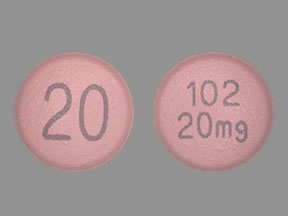Tipiracil / Trifluridine Side Effects
Medically reviewed by Drugs.com. Last updated on Jun 26, 2024.
Applies to tipiracil / trifluridine: oral tablet.
Serious side effects
Along with its needed effects, tipiracil/trifluridine may cause some unwanted effects. Although not all of these side effects may occur, if they do occur they may need medical attention.
Check with your doctor immediately if any of the following side effects occur while taking tipiracil / trifluridine:
More common side effects
- black, tarry stools
- bleeding gums
- blood in the urine or stools
- blurred vision
- chills
- coughing up blood
- dizziness
- fever
- headache
- hoarseness
- increased menstrual flow or vaginal bleeding
- lower back or side pain
- nosebleeds
- painful or difficult urination
- pale skin
- paralysis
- pinpoint red spots on the skin
- pounding in the ears
- prolonged bleeding from cuts
- red or dark brown urine
- slow or fast heartbeat
- sore throat
- trouble breathing
- ulcers, sores, or white spots in the mouth
- unusual bleeding or bruising
- unusual tiredness or weakness
Less common side effects
- bladder pain
- bloody or cloudy urine
- frequent urge to urinate
- muscle aches
- stuffy or runny nose
Other side effects
Some side effects of tipiracil / trifluridine may occur that usually do not need medical attention. These side effects may go away during treatment as your body adjusts to the medicine. Also, your health care professional may be able to tell you about ways to prevent or reduce some of these side effects.
Check with your health care professional if any of the following side effects continue or are bothersome or if you have any questions about them:
More common side effects
For healthcare professionals
Applies to tipiracil / trifluridine: oral tablet.
Hematologic adverse events
- Very common (10% or more): Anemia (77%), neutropenia (67%), thrombocytopenia (42%)
- Common (1% to 10%): Febrile neutropenia[Ref]
Other
Gastrointestinal
- Very common (10% or more): Nausea (48%), diarrhea (32%), vomiting (28%), abdominal pain (21%)
- Common (1% to 10%): Stomatitis (8%)[Ref]
Respiratory
- Common (1% to 10%): Nasopharyngitis, pulmonary emboli
- Uncommon (0.1% to 1%): Interstitial lung disease[Ref]
Metabolic
- Very common (10% or more): Decreased appetite (39%)[Ref]
Cardiovascular
- Common (1% to 10%): QTc interval prolongation[Ref]
Nervous system
- Common (1% to 10%): Dysgeusia[Ref]
Genitourinary
- Common (1% to 10%): Urinary tract infections[Ref]
Dermatologic
References
1. (2015) "Product Information. Lonsurf (tipiracil-trifluridine)." Taiho Oncology, Inc.
More about tipiracil / trifluridine
- Check interactions
- Compare alternatives
- Dosage information
- During pregnancy
- Drug class: antineoplastic combinations
- En español
Patient resources
- Tipiracil and trifluridine drug information
- Trifluridine and tipiracil (Advanced Reading)
- Trifluridine and Tipiracil
Other brands
Professional resources
Other brands
Related treatment guides
Further information
Tipiracil/trifluridine side effects can vary depending on the individual. Always consult your healthcare provider to ensure the information displayed on this page applies to your personal circumstances.
Note: Medication side effects may be underreported. If you are experiencing side effects that are not listed, submit a report to the FDA by following this guide.

